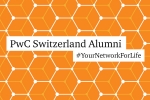
Keeping employees safe and healthy in these troubling times, it is essential that organisations embrace and encourage remote work when feasible. The Bureau of Labor Statistics estimates that by 2028, 73% of all teams will have remote workers.
Home working can have negative connotations and can raise trust issues. Are employees really working or are they watching Netflix? Companies should always remember why they hired their people. If they have entrusted them with their products, brands and services, they should also trust them in doing their job. Furthermore, research has proved the many benefits of remote work. Some of them are:
- Higher productivity: Stanford University economics professor Nicholas Bloom demonstrated that home workers were 13.5% more productive than office-based peers.
- Happier employees: employees are 9% more engaged and 50% less likely to quit their job.
- Cost saving: Global Workplace Analytics estimates the saving to over 11,000$ per half-time telecommuter per year.
- Greener employees: increasing remote work means fewer people commuting and less emissions.
Ensuring an inclusive workplace
Although there are many advantages to working remotely, there can be some downsides especially when it comes to team spirit and inclusion. How to keep that “team feeling” without being able to see and talk to people face to face in an ad hoc manner? How to continue having those “a ha” problem solving conversations which traditionally occur around the coffee machine? And most importantly, how can one ensure in a constantly evolving world that every employee feels included and valued?
As a client facing organisation, PwC has equipped all employees with the adequate tools to carry out their work in any location. The journey to make this happen wasn’t an easy one. Our learnings to ensure an inclusive workplace, even when we don’t sit together, are the following:
- Leverage technology
Identify a platform which works for your organisation to connect safely remotely (file sharing, virtually meetings, etc.) and communicate, train and retrain your employees on how to use it. - Clear accountability
Ensure all team members are clear about their individual goals, roles and responsibilities so they can continually focus and prioritise tasks and workload. - Team and individual meetings
Virtual meetings tend to take place more frequently, are shorter and more focused. To ensure everyone is prepared and can contribute in a positive way, consider using a standard agenda. - Online etiquette
Be online and ready when your meetings start. Mute your microphone to avoid background noise and turn on your computer’s camera; all parties are more likely to be engaged and not distracted by email. - Everyone has a voice
Research highlights that a meeting is typically dominated by 2-3 individuals who do most of the talking. Not engaging introverts into a dialogue can make conversations one-sided. We recommend introducing an “ask everyone” question prior to making decision. - Follow up
After each meeting, send out short meeting summaries: what was discussed, what are the next steps, by who and by when do tasks need to be delivered. This will help keep everyone accountable and focussed.
Last but not least, communicate, communicate, communicate. Leverage both formal (e.g. email) and informal (e.g. WhatsApp, Slack, etc.) communication. Information sharing is key to ensure people feel part of a team and have the opportunity to express their thoughts and opinions.
Summary
- It is estimated that in the next couple of years, a significant number of teams will have remote workers.
- Research has shown that home workers are happier, more engaged and more productive.
- Ensuring an inclusive workplace when employees are working remotely can be a challenge. To do so, some of our tips are to set clear goals and leverage technology as well as modern communication methods.







